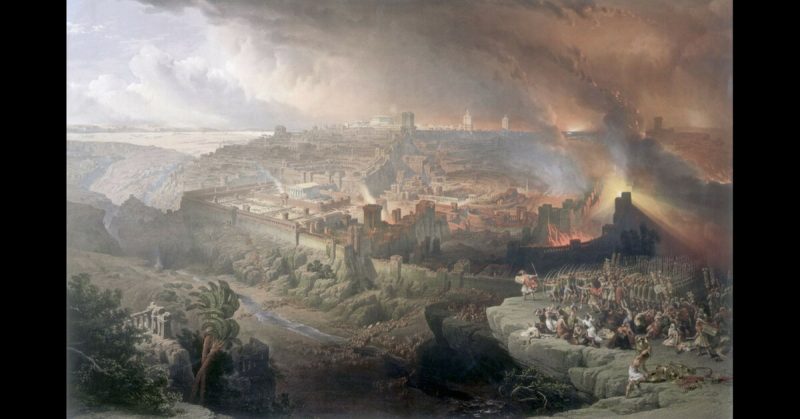The Romans generally tolerated other religions, allowing and even welcoming Egyptian gods into their pantheon. Though they viewed the monotheistic Jews as being odd, they were left more or less free to practice their own religion. The great Jewish revolt was not a religious war, but a war against Roman imperialism and unfair taxation. In the 60s CE, a financial crisis forced Rome to raise the taxes throughout the empire.
The Jews in Jerusalem resisted the extra taxes heavily and fighting broke out after Roman forces looted a temple and killed as many as 6,000 citizens. This massacre prompted a region-wide revolt, and the Roman garrison of 30,000 was ambushed as they tried to retreat from the area. Several thousand Romans were killed, and their weapons and armor were used by the Jewish militia forces.
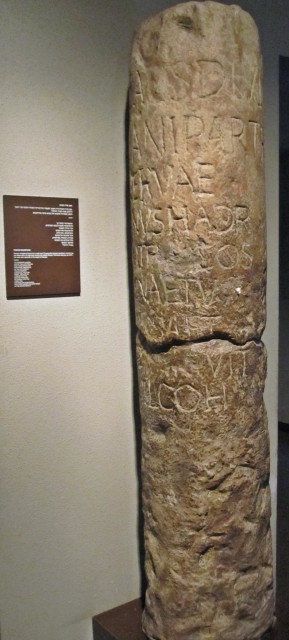
With the garrison defeated, Emperor Nero sent in accomplished General named Vespasian to handle the rebellion. Vespasian had a great deal of success as he focused out securing many of the smaller cities and forts in the region before turning his attention on Jerusalem.
Vespasian had to return to Rome to ultimately be proclaimed the next Emperor and left his son, Titus, to finish the war. Titus began the siege of Jerusalem in 66 CE.
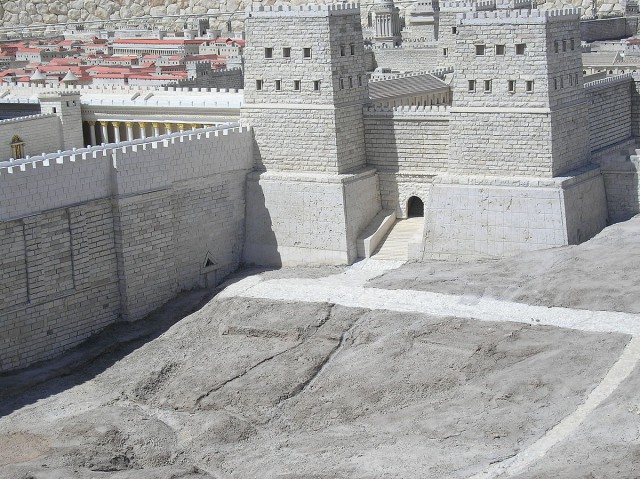
Titus surrounded the city and even with it surrounded he allowed travelers to enter the city. This served to strain the supplies of the city in the event of a lengthy siege.
Jerusalem was a heavily fortified city with several sets of walls built in harmony with the many hills and steep valleys of the area. The main source for information about the war, Josephus, describes the three walls of Jerusalem as being as magnificently constructed as the temples they protected. Broad walls were protected by towers 40 feet and higher, and the natural valleys made many approaches uphill.
Despite the fortifications of the city, Titus decided to attack in February of 66 CE; his decision was affirmed after one of his negotiators was wounded by a missile. Several siege engines worked to launch stones at the fortifications and rams approached to breach the walls. The defenders sent forth many assault parties to dismantle the siege weapons and had enough success that the breach was postponed for several months.
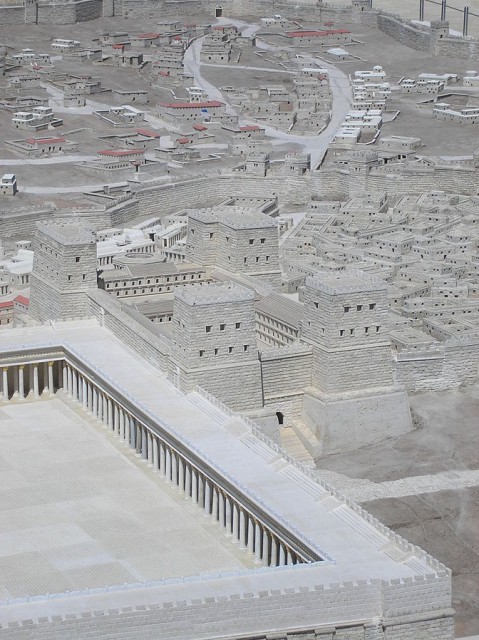
When the Romans finally breached the first wall of the city, they gained access to the most recent expansion of the city and were faced with the two other walls and the Antonia fortress which stood at the end of the second wall and protected the great temple of Herod.
The Romans were again stalled by the stout walls, they had breached the second wall within days, but that only led to an inner neighborhood confined by the third wall and the fortress. Bitter street fighting pushed the Romans back through their breach in the second wall, and though the Jews fought desperately at the breach, Roman siege engines were able to widen the breach and then take the inner neighborhood.
Though the Romans had the first two walls breached and portions of the city captured the remaining city was well defended and supplied. To solve the problem of new supplies getting into the city, Titus built a siege wall that looped around the valley outside the unbreached third wall and through the Roman-held sections, thereby fully containing the city. Titus personally did rounds of the wall during the construction to ensure its completeness and to raise the men’s morale. This put a strain on the defenders, but they had rainwater cisterns to keep themselves in drinking water, so could hold out their defense.
Titus then sent forces on the outside facing sections of the first wall and against the inner Antonia fortress. The Romans concentrated a huge assault against the fortress with stones thrown from siege weapons and battering rams, but the defenders caused a great deal of damage to the Romans by throwing rocks and missiles down from the tower. A few sections were damaged in the fortress but very little was accomplished. The assault on the old outer wall had also failed.
Seeing that it may not be taken by force, Titus sent men to take it in a nighttime sneak attack. It was initially successful but once the alarm was sounded the fortress defenders put up a fight that lasted through the night and well into the next day. The Romans had gotten a piece of the fortress, and they steadily pressed forward to take the whole thing.
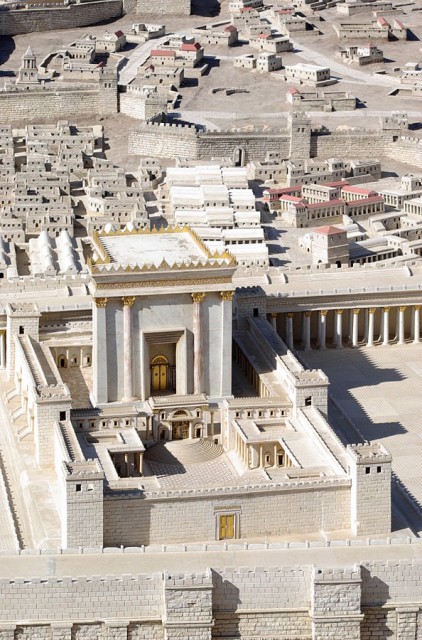
The fortress was attached to the walls around the great temple, and a fierce fight raged at this junction. Titus had expressed a desire to preserve the temple, likely with thoughts of turning it into a Roman pantheon of sorts as it was a magnificent building. Unfortunately for Titus’ plans, a soldier threw a torch into the temple and it caught fire and was destroyed.
The Jewish defenders were forced to withdraw due to the fire, but they were able to bait the Romans into over-pursuing them and then they spread the fire quickly into the advancing Romans. Many perished in the rapidly spreading fire, and the remaining Roman advanced force was cut off from reinforcements and, with their backs to the fire, were slaughtered by the Jews.
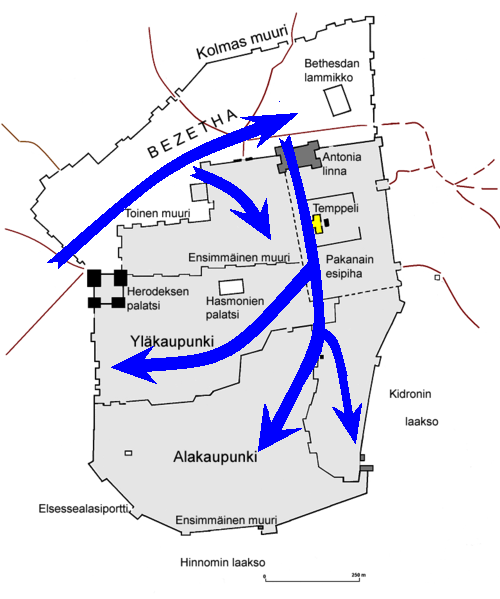
When lines of attack were reformed the Romans powered through the temple district and into the lower areas of the city. Resistance was fierce only in the higher upper city containing Herod’s palace. Many days of urban combat followed and the Romans assaulted from many sides as they were finally able to breach the inner walls in multiple areas.
Eventually, by September, the city was taken completely. Underground tunnels helped many to escape, but the city had been harboring a great many rebels and refugees from the rebellion, and many could not escape in time. As many as a million people, civilians and soldiers, both Roman and Jewish, perished in the lengthy siege.
After taking Jerusalem, Titus left a small force to defeat any remaining strongholds including the mountain fortress of Masada. The brutal force utilized in the siege of Jerusalem and the ruthless nature of the campaign was a definite show of force for the Roman Empire. Though the Levant was farther from Rome than many of their other territories, they were adamant about keeping the area as a well behaved and profitable territory of their empire.
By William McLaughlin for War History Online
